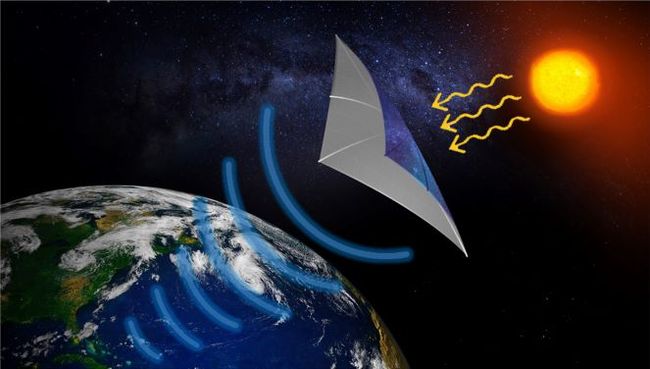New era of energy or a pipe dream?
Japan has announced plans to send solar energy from space to Earth in 2025, two years after a similar achievement by American engineers. This development is a step toward a potential space-based solar power plant that could help transition away from fossil fuels.
At this week's International Space Energy Conference, Koichi Ijichi, an adviser to the Japan Space Systems Research Institute, presented Japan's plan to build a miniature space solar power plant in orbit that would wirelessly transmit energy from low Earth orbit to Earth.
«This will be a small satellite weighing about 180 kilograms, which will transmit about 1 kilowatt of power from an altitude of 400 kilometers», — Ijichi stated.
One kilowatt — the amount of energy required to run a household appliance, such as a small dishwasher, for an hour, depending on its size. This is significantly smaller scale required for commercial use. Additionally, the satellite will only be able to transmit power for a few minutes and then will need several days to recharge.
The spacecraft will use a 2 square meter onboard photovoltaic panel to charge its battery. The accumulated energy will then be converted into microwaves and sent to a receiving antenna on Earth. Since the spacecraft is moving at a speed of about 28,000 km/h, the antenna elements must be spaced about 40 kilometers apart and 5 kilometers apart to ensure sufficient energy is transmitted.
The mission, part of a project called OHISAMA (Japanese for «sun»), is being prepared for launch in 2025. Researchers have already demonstrated wireless transmission of solar energy to the ground from a stationary source, and in December they plan to transmit from an airplane. According to Ijichi, the aircraft will be equipped with an identical photovoltaic panel that will be installed on the spacecraft, and will transmit energy over a distance of 5 to 7 kilometers.
Generating solar energy in space, first described in 1968 by former Apollo engineer Peter Glaser, has long been considered science fiction. Although theoretically feasible, this technology was considered impractical and too expensive since it required huge structures to be assembled in orbit to produce the required power output. However, according to experts speaking at the conference, the situation has changed as a result of technological advances and the urgency of decarbonizing the world's energy supply to prevent climate change.
Unlike most renewable energy technologies used on Earth, including solar and wind power, space-based solar energy can be available all the time because it is not affected by weather or time of day. Currently, nuclear or gas- and coal-fired power plants are used to meet demand when the wind stops blowing or after the sun goes down. Improved technology may help solve some of this problem in the future. However, there are still challenges to achieving a secure, zero-carbon energy supply by the middle of this century, as envisaged by international climate change agreements.
Advanced robotics technology, improved wireless power transmission efficiency and the advent of SpaceX's Starship rocket could make space-based solar power a reality, experts said at the conference.
In 2022, the Space Solar Power Demonstrator mission, led by the California Institute of Technology, successfully demonstrated the transfer of solar power from space. This achievement marked significant progress in the field of space solar energy.
A number of similar demonstration projects are currently being developed. Space agencies and research institutes such as the European Space Agency (ESA), the Defense Advanced Research Projects Agency (DARPA) and the US Air Force are researching this technology. Commercial companies and startups are also developing concepts with the possibilities Starship and advances in space robotics.
However, the potential of space solar energy is controversial. In January, NASA published a report expressing doubts about the feasibility of this technology. The report highlights the complexity and high energy costs associated with building, launching and assembling orbital power plants. NASA estimates that the cost of electricity generated in this way will be 61 cents per kilowatt-hour, which is significantly higher than the cost of solar or wind energy on Earth (5 cents per kilowatt-hour).
Additionally, the overall carbon footprint of electricity production and the greenhouse gas emissions generated by the launch vehicles that launch assemblies into orbit make such electricity less climate-friendly compared to terrestrial technologies. For example, a one-gigawatt space solar power plant, such as the CASSIOPeiA concept proposed by UK-based Space Solar, would require 68 Starship launches to deliver components into space.

